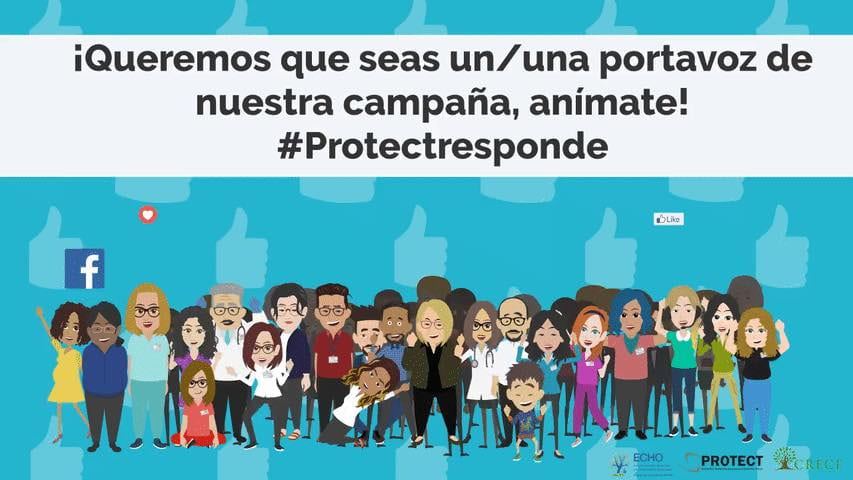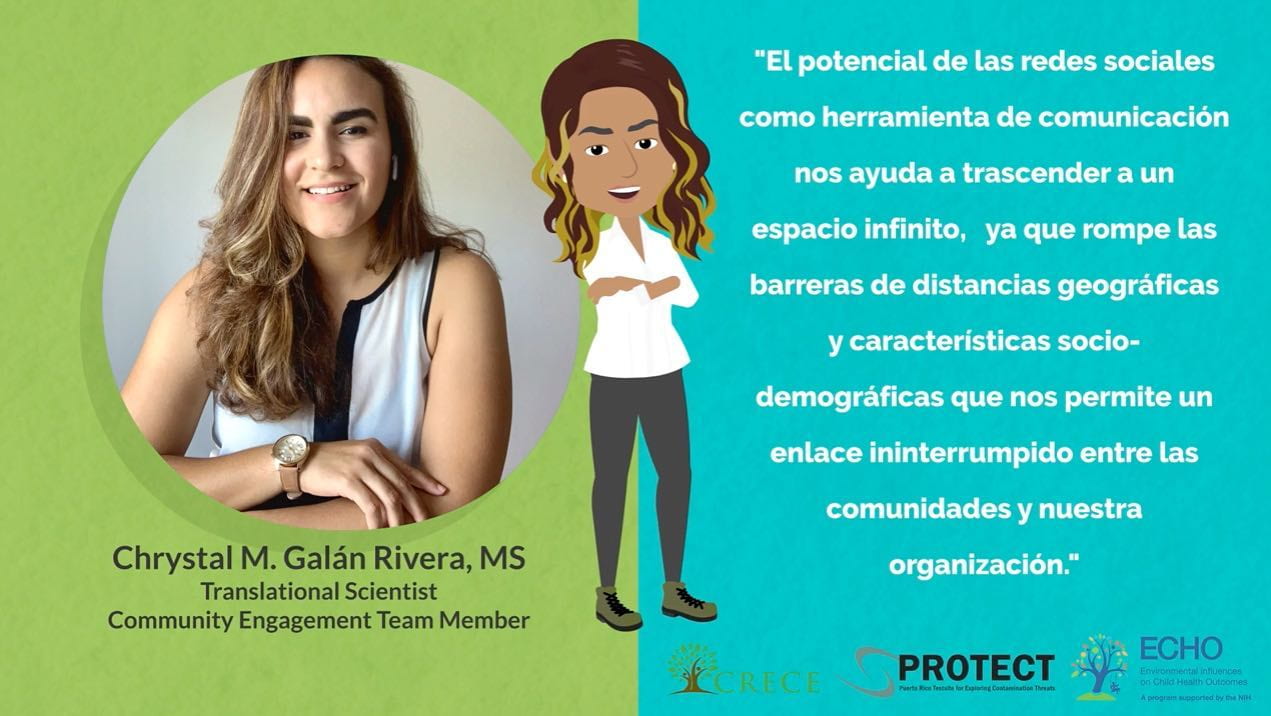Whether addressing Superfund contamination, chemical exposures, the Zika virus, a devastating hurricane, or a global pandemic, the PROTECT Community Engagement Core (CEC) is always ready to respond with education, supplies, and support for the cohort and the greater Puerto Rico community. Now, in response to a year of lockdowns and social distancing, the CEC has launched a new social media campaign, PROTECT Responde, to help build and maintain the CEC’s links with the community, our participants, and their families.

PROTECT Responde Facebook graphic, saying, “We want you to be a spokesperson of our campaign, join us! #ProtectResponde.” Most of the characters in the image are cartoon depictions of real PROTECT researchers and staff
The PROTECT Responde campaign is centered on Facebook and Instagram, and will feature videos, educational materials, and resources on environmental contaminants and their health impacts. Education is the CEC’s first strategy and the essential tool to fight the daily battle of contaminant exposures affecting our participants, their children, and their communities. The campaign’s name, PROTECT Responde, represents our commitment to decreasing the risk of preterm births in our participants and the communities in the program.
The main goal is to make people aware of environmental contaminants, including what they are, where they can be found, how they impact human health, and what people can do to reduce exposure and protect their health. The PROTECT Responde campaign is a call to action that provides participants and the community solutions to address these concerns. In the process, the CEC team helps to disseminate PROTECT’s research findings to the community, while providing a forum for responding to questions and ensuring understanding.
The campaign features a variety of animated videos developed by PROTECT Translational Scientist Chrystal Galán Rivera. The videos are based on PROTECT’s environmental health research findings, which are translated into messages suitable for the general public by trainee Nobel Hernandez. Each video is narrated by a member of the PROTECT Community Engagement team, and includes cartoon representations of the PROTECT team members. Facebook posts under the heading “Conoce a PROTECT” (Meet PROTECT) introduce team members to the page’s 500 followers. Each team member answers a question, such as “What is the importance of educating others about environmental health?” At a time when in person events are still high-risk, these videos and posts help provide a personal connection with the PROTECT team.

“Meet PROTECT” post introducing Chrystal M. Galan Rivera, MS, Translational Scientist on the CEC team. She writes, “The potential of social networks as tool of communication helps us transcend to an infinite space, since they break barriers of geographic distance and socio-demographic characteristics and allow us an uninterrupted link between the communities and our organization.”
To kick off the PROTECT Responde educational programming, the CEC team launched a video on COVID-19 and pregnancy. Via a superhero motif, the video describes how COVID-19 is transmitted and what scenarios pose the highest and least risks. The majority of the video focuses on the risks to pregnant women and what they can do to mitigate these risks. (Story continues below video.)
Throughout the month of June, community members and participants can submit anonymous questions about pregnancy and COVID-19 through Facebook or Instagram. At the end of the month, CRECE/ECHO pediatrician Dr. Gredia Huerta-Montañez will participate in an online chat to answer these questions and discuss the potential effects of the virus on pregnant women in more detail.
The PROTECT Responde series will continue over the next few months, diving deeper into chemical substances such phthalates and parabens, and their potential impacts on human health. Follow PROTECT on Facebook and Instagram and be sure to keep an eye out for the #ProtectResponde hashtag to learn more.
